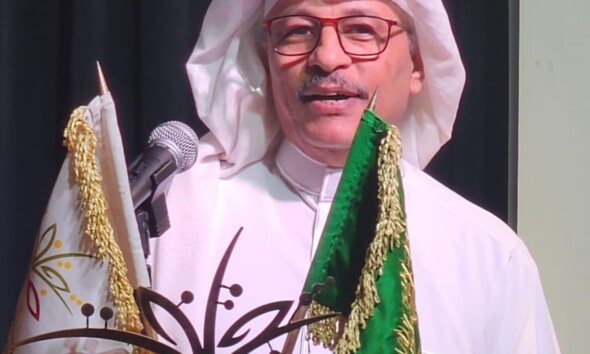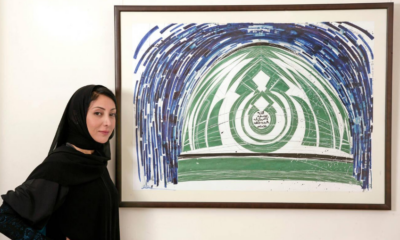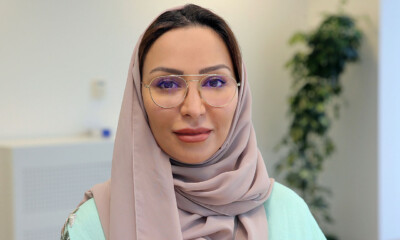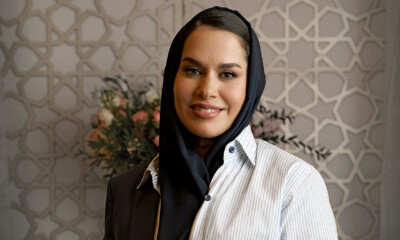Home » Interviews » Designer Diala Al-Ghamrawi to Arabisk London: Elegance and Simplicity are the Keys to Success; Simplicity Produces Beauty
Interviews
Designer Diala Al-Ghamrawi to Arabisk London: Elegance and Simplicity are the Keys to Success; Simplicity Produces Beauty
Published
4 months agoon
By
Huda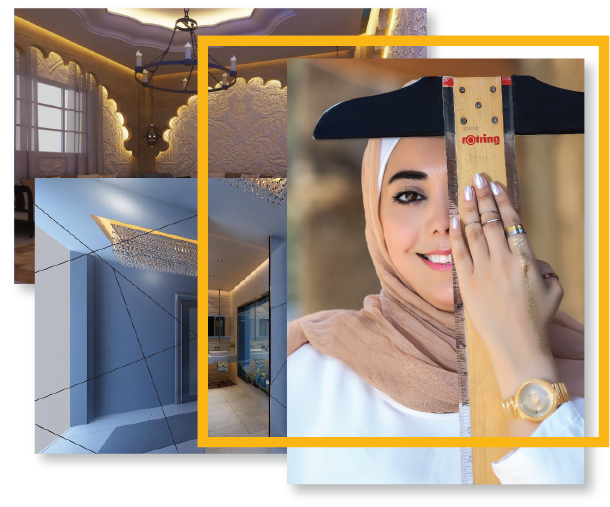
Diala Al-Ghamrawi derives her artistic and creative enthusiasm for interior design from her strong belief in her skills and abilities and her desire to learn about and appreciate human, artistic, and civilised cultures.
She finds a key to wide and rich vistas of success and innovation in the difficulties of real-world experience. Her inventive designs, which combine contemporary and authentic elements, demonstrate her unwavering dedication to her clients and her artistic objectives despite her limited financial means.
Interviewed by: Mohsen Hassan
Thus, Diala Al-Ghamrawi enjoys reflecting on the old traditional model and emerging from it with a modern innovative model, as per a penetrating artistic vision. She believes in the importance of communicating cultures, civilisations, and times, and she adopts the combination of modernity and authenticity as a pillar to develop and strengthen her host community in the Kingdom of Saudi Arabia. She also hopes to use technology creatively in the field of home design and decoration in the future.
Arabisk London interviewed Diala Al-Ghamrawi, a Lebanese interior designer who lives in Saudi Arabia, about her creative and artistic life and her ongoing goals to contribute authentically as an artist and engineer to plans and strategies that raise the standard of Arab and Islamic design and its illustrious presence in regional and global arenas.
First, after years of experience in the design industry, what are the constants and changes in Diala Al-Ghamrawi’s professional and creative convictions?
Over the years of experience and labour, there have been some constants and everlasting convictions, such as the belief in the importance of design and how it impacts the quality of life, style, and world, as well as human psychology. Every artistic place is a one-of-a-kind experience that represents its owner’s personality and lifestyle, as well as an opportunity to develop that style.
The ever-evolving and changing things are reflected in my ongoing quest for various sources of inspiration from around the globe and from contemporary technology, which necessitates that I stay current on the latest developments in design techniques and materials.
Generally speaking, I view every assignment as a chance to expand my creative and artistic horizons, both personally and for clients worldwide. Typically, a key component of all of my designs is my ability to adjust to the many variables of art and creativity.
What obstacles may one encounter when attempting to establish their own creative and technical abilities? And what is this journey’s greatest obstacle?
There are always hurdles in our profession of design, especially since artificial intelligence tools and effects entered the scene. As a result, artists and designers must stay up to date with these technological advancements and understand how to use them.
Naturally, this is on top of the problems posed by the competitive job market, as well as the difficulties relating to personal and family life, which include the obstacles of balancing the demands of private life with those of creativity.
The greatest difficulty still lies in preserving continuity, keeping up with the advancements in the field of design, and also assimilating artistic gains and creatively applying them to all new designs, both present and future.
Which moral and sensory standards are most crucial to Diala Al-Ghamrawi while creating your ideas and artwork? Do you find inspiration in human heritage?
I always pay close attention to the elements of quality and professionalism because I think that the quality of the artwork and the designs must have harmonious, appealing details that support the design’s concept, goal, and surroundings. This is because when the design exhibits strength and beauty in the details, it shows innovation and originality.
The customer must feel that the design satisfies his goals, preferences, and comfort level. I am constantly interested in the degree of human and emotional communication.
But since they are among the most significant principles, I am an advocate of beauty and simplicity in design. “La simplicite fait la beaute” is a French saying that means “simplicity makes the most beautiful.” Thus, the secret to any success is to keep things elegant and uncomplicated.
In my opinion, human heritage is a fantastic source of inspiration, particularly because it contains tales, specifics, and concepts that foster creativity and the blending of both new and old artistic and creative components to produce a product or design that is both artistic and humane while also being modern and genuine.
How does Diala Al-Ghamrawi see Lebanon and the Kingdom, two incubators, concerning Lebanese origins and Saudi coexistence?
This is a very personal subject for me because Saudi Arabia is my second home and Lebanon is my mother. I feel extremely comfortable, secure, and at home here, and I always look forward to the day when Lebanon experiences stability and resumes its prosperity and blossoming. 
In light of a dynamic and vital revolution marked by authenticity and modernity, my life in the Kingdom is moving along at a great pace. This is especially true given the goals of the Saudi Crown Prince (Mohammed bin Salman), may God protect him, which combine innovation, modernity, and technology on the one hand, with authenticity and heritage on the other, which motivates me to work harder to stay up to date with everything new in my line of work and specialisation.
Certainly, when I’m working on a new creative design, I can’t help but be inspired by the spirit of Arab creativity on Saudi soil thanks to this sophisticated identity blend, and my Lebanese imagination and aesthetic vision, which I acquired from Lebanon and the Lebanese lands, never leave me.
Additionally, these two nurturing conditions allow me to consistently produce pieces that blend modernism and creativity with aspects of authenticity.
For your line of work and innovation, what does the Kingdom of Saudi Arabia’s contemporary economic and cultural revival mean?
As I just mentioned, the Kingdom’s economic and cultural revival significantly contributes to the creation of numerous chances for innovation and creativity. These advancements, which have been made possible by Vision 2030, improve working conditions for numerous professional and creative industries. Particularly, in the areas of investments in the arts and technology, which account for a significant portion of the expressions of this expanding Saudi renaissance.
Personally, I see this renaissance as a great opportunity to develop creative methods and promote culture and art through design. I am not exaggerating when I say that the Kingdom’s modernisation and development have made it possible to realise artistic projects that were once only dreams and fantasies because the Saudi environment has evolved into a nurturing environment with elements that attract both regional and international cultures and experiences.
The Kingdom is now a powerful platform for us to realise our artistic, skilled, and creative selves following the greatest standards of quality and evocative beauty—all of which are good elements, particularly for us as designers.
How satisfied is Diala Al-Ghamrawi with women’s standing and employment prospects in the Kingdom?
In the Kingdom of Saudi Arabia, employment prospects are wide-ranging, inclusive, and equitable for both men and women, particularly in the extensive and highly esteemed categories of labour for women. Women’s labour, ideas, views, and creations are respected in Saudi culture.
I can find countless job opportunities in the Kingdom as a designer, which enables me to practise my artistic, creative, and innovative work in a very professional way because I have access to all kinds of support, whether it be technological or in the form of different tools and resources. To put it plainly, we are now able to do very creative and expert work and designs thanks to the collaboration of Saudi and Lebanese employees.
How do you strike a balance while creating your technical and artistic works between resource poverty and affluence and luxury?
No matter how restricted the resources are, true originality always shows itself in the high-end artistic dealing with them. Even though this is a common problem when beginning a project for customers with limited funds, we always rise to the occasion while taking care to preserve all of the design’s artistic and creative components. 
We frequently have options that allow us to meet our clients’ needs in terms of art, creativity, aesthetics, and finances.
In any event, any difficulty of this kind we encounter offers us a fantastic chance to grow, learn, get more experience, find new tools and materials, and learn how to adjust to various situations, all of which contribute to the distinctive and useful development of our artistic abilities.
Strong concepts and outstanding accomplishments, in my opinion, always arise when we can overcome challenges. In general, creativity, art, and the development of new skills and abilities result from striking a balance between high and low budgets.
What kinds of innovative initiatives and concepts, particularly in your area of expertise, do you think the Kingdom of Saudi Arabia should focus on both now and in the future?
In the Kingdom of Saudi Arabia, several projects and concepts, particularly in the area of interior design, have the potential to significantly alter the atmosphere and aesthetics. From my perspective, there is a very good chance to use the concept of green design to improve sustainability in the building and design industry so that we can take advantage of renewable energy sources.
As a result, we can design and implement initiatives that complement the Kingdom’s goal of promoting sustainable development. Smart building designs, locally sourced materials, materials with little or no hazardous emissions, organic paints, recycled textiles, and other materials and techniques that improve environmental sustainability are a few examples.
By combining traditional arts and technology, we can also concentrate on initiatives that assist local communities grow. This will contribute to the creation of a rich cultural environment that strengthens national identity.
We can develop new parks, public spaces, and venues for artistic and cultural events, for instance. Here, achieving this integration might have a big beneficial effect on how the Saudi environment looks overall. Normally, I stress how crucial specialised research centres are to achieving the objective of being a pioneer in this area.
Does Diala Al-Ghamrawi want to build more connections with Arab and foreign designers? Which worldwide and regional artistic school of design do you prefer?
In the Arab world, as well as in other nations and states, I am eager to build relationships with all designers because I think that talking to and exchanging ideas with professionals and talented people helps to form an artistic and creative vision towards all arts, cultures, and different civilisations. This refines experiences, visual memory, general cultural information, and the creative experience. It also helps to develop and enhance skills specific to all situations.
Through these connections, I was able to improve and update all of my ideas and get a great deal of experience working with foreign designers. These connections also offered numerous creative and unique opportunities.
I am also eager to attend as many international exhibits and events as possible in my area of expertise since this will give me the chance to network with more experienced, talented, and professional designers and develop more creative and skilful contacts.
In addition to the encouraging chances, it offers to learn about the latest developments in the design industry, which aids in the development and crystallisation of numerous concepts in line with my own artistic vision.
Regarding my preferences, the contemporary and modern art school, which blends modernity and tradition in design, is usually my first choice. I enjoy showcasing classic patterns in a fresh, contemporary way and combining them with cutting-edge technology.
From a creative perspective, how can a nation’s architecture and infrastructure be based on a refined and appealing visual vision?
With the right architectural infrastructure, any nation can develop a visually appealing, civilised vision for itself. However, there are a few key steps that must be taken.
First and foremost, the nation’s vision should be based on incorporating local cultural and historical elements and emphasising them through buildings and other designs within the overall infrastructure, as this process strengthens the local population’s sense of national identity.
In this framework, we can also use technology to design essential facilities that showcase this nation’s innovation and modernity, all the while expanding greenery and enhancing lighting and illumination in creative ways that catch the eye and spread a positive sense of joy and beauty.
In this sense, what about Saudi Arabia?
This is Saudi Arabia’s direction, as stated in Vision 2030 and the Crown Prince’s vision, which from its debut in 2016 has focused on modernising cities based on culture, legacy, and technology. The NEOM project and other massive projects on the Red Sea and abroad are only a few of the numerous initiatives in this area. 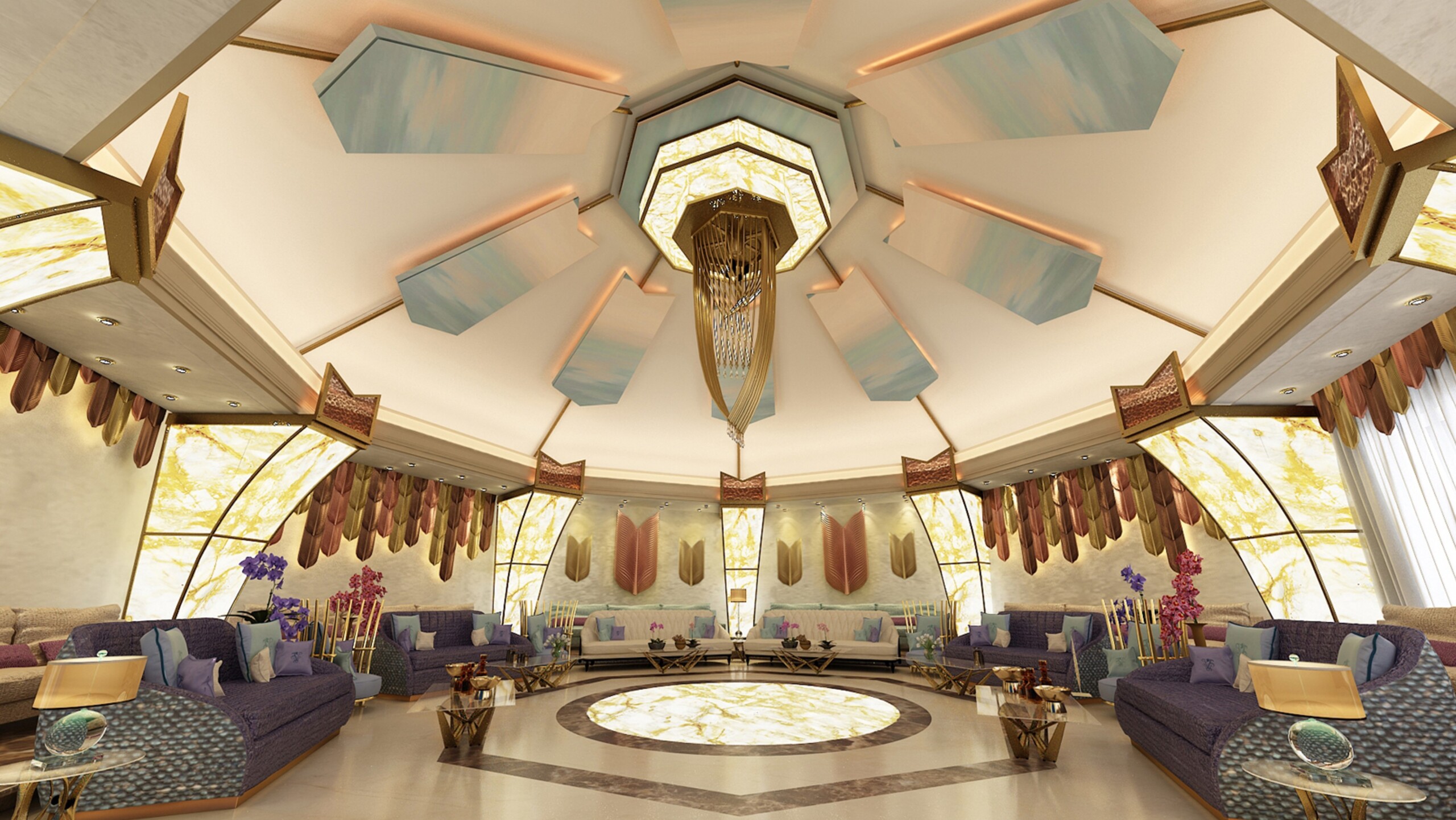
They are all examples of civilised projects that consider the creation of an appealing environment that depends on the highest standards of technical and aesthetic appeal while also emphasising the local identity and culture. In this regard, Saudi Arabia as a whole is moving forward with assurance, drawing a lot of tourists and investors.
This confidence keeps getting stronger and more ingrained, proving that things will become better in the future. I feel like I am a part of this evolution, and I am grateful to God for giving me stories about the Kingdom, my home, and my beloved incubator that I will be able to share with my children and grandchildren in the days and years to come. I am a citizen of this nation, and I adore every aspect of it.
From your perspective as a designer and creative, how can we transform the conventional area of design into a different therapeutic sector for the issues and illnesses of our Arab societies?
In one way or another, the fields of interior design and design in general enable the development of therapeutic solutions for the illnesses and issues facing modern Arab society.
In my opinion, we can use creative and unique designs to solve problems that affect the local community. By researching and analysing societal issues, we can create sustainable designs that benefit all facets of society, including but not limited to individuals with special needs, in a way that improves their sense of inclusion and fosters constructive relationships with other members of the community.
On the other side, by combining arts and cultures via designs that convey the shared characteristics of different societies, we may strengthen their unity.
Design generally has a significant impact in raising awareness. The Saudi Arabian sports track, for instance, has designs that encourage community groups to take care of their physical and mental well-being and participate in a variety of sports.
As a result, their designs aid in the treatment of several issues that plague our civilisations. In this situation, collaboration between many disciplines is typically required, beginning with psychiatrists and concluding with artists and creatives from diverse sectors.
This kind of collaboration may result in creative concepts and projects that blend therapy and art. All we need is a plan to demonstrate how design can help with these kinds of social and humanitarian problems.
What initiatives and ideas does Diala Al-Ghamrawi have in mind for the future to have a significant impact and change the nature of your work?
Presenting innovative projects and designs that make a significant impact in this field—humanely, historically, and culturally—especially in the centre of Saudi society is my goal for the future. This will be accomplished through collaborative projects, events, and workshops that bring together local artists and interior designers from various backgrounds, cultures, and environments, which promotes innovation circles and designs that honour this nation’s culture and heritage, and fosters creative and skillful collaboration.
Indeed, I also hope to use technology more in my work and designs, especially augmented virtual reality, which allows clients to experience desired designs in a matter of seconds by placing them in a framework. This gives them a more realistic experience before implementing any designs they want.
On the whole, I aspire to be honoured by accomplishing these goals and others to contribute to the Kingdom of Saudi Arabia’s system of innovation and generosity.
Lastly, what is the life goal Diala Al-Ghamrawi expects to accomplish in the days ahead?
I have a lot of goals I want to accomplish, both personally and practically. Practically speaking, I want to make a lasting impression that people will remember and greatly benefit them, particularly in the areas of psychological, social, and cultural effects both domestically and globally.
I hope to gradually have the privilege of having this influence on my local, regional, and international surroundings, particularly when it comes to reaching my ultimate objective, which is to present the Arab and Islamic world’s civilised face to the world’s peoples through my artwork and designs.
Through this, I hope to convey to everyone that God is beautiful and appreciates beauty, that our nations and societies can showcase the various facets of beauty, that we can present what benefits our societies and humanity as a whole, and that we can convey the richness of our cultures and the history of the Arab and Islamic worlds.
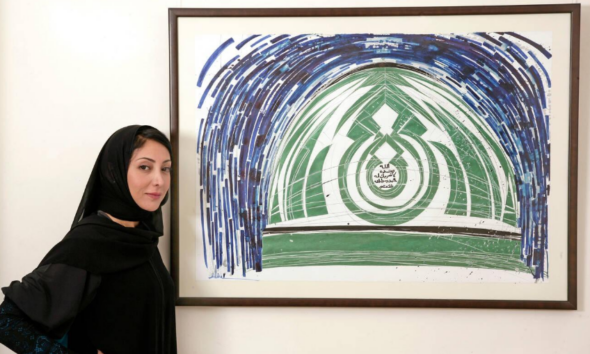
Lina Gazzaz: A Saudi Artist Who Painted History in Modern Colours!
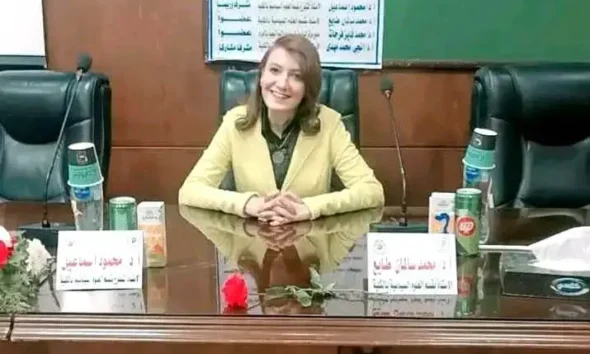
Terrorism Specialist Dr. Shimaa Samir: Multipolarity is Undermining Nuclear Deterrence, and it is Possible to Tame Extremist Ideology!
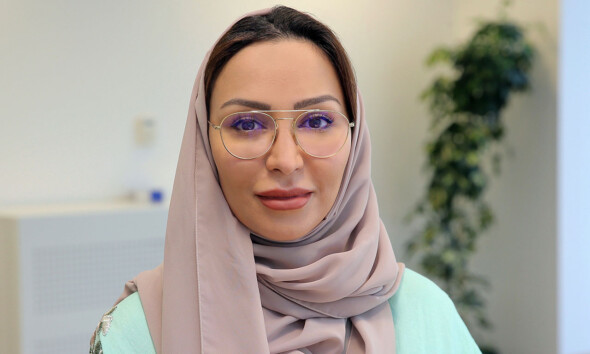
Daniah Orkoubi: A Saudi Entrepreneur and Technological Pioneer
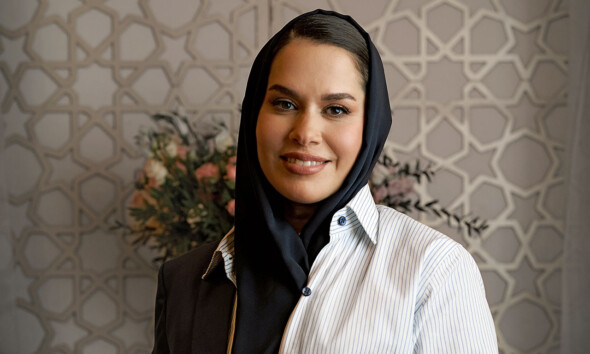
Saria Abdeen and Samt: Pioneering Saudi Efforts to Global Recognition
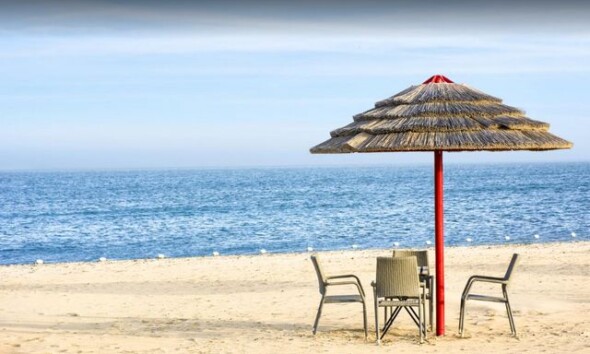
Jeddah’s Top Beaches for Women in 2025
